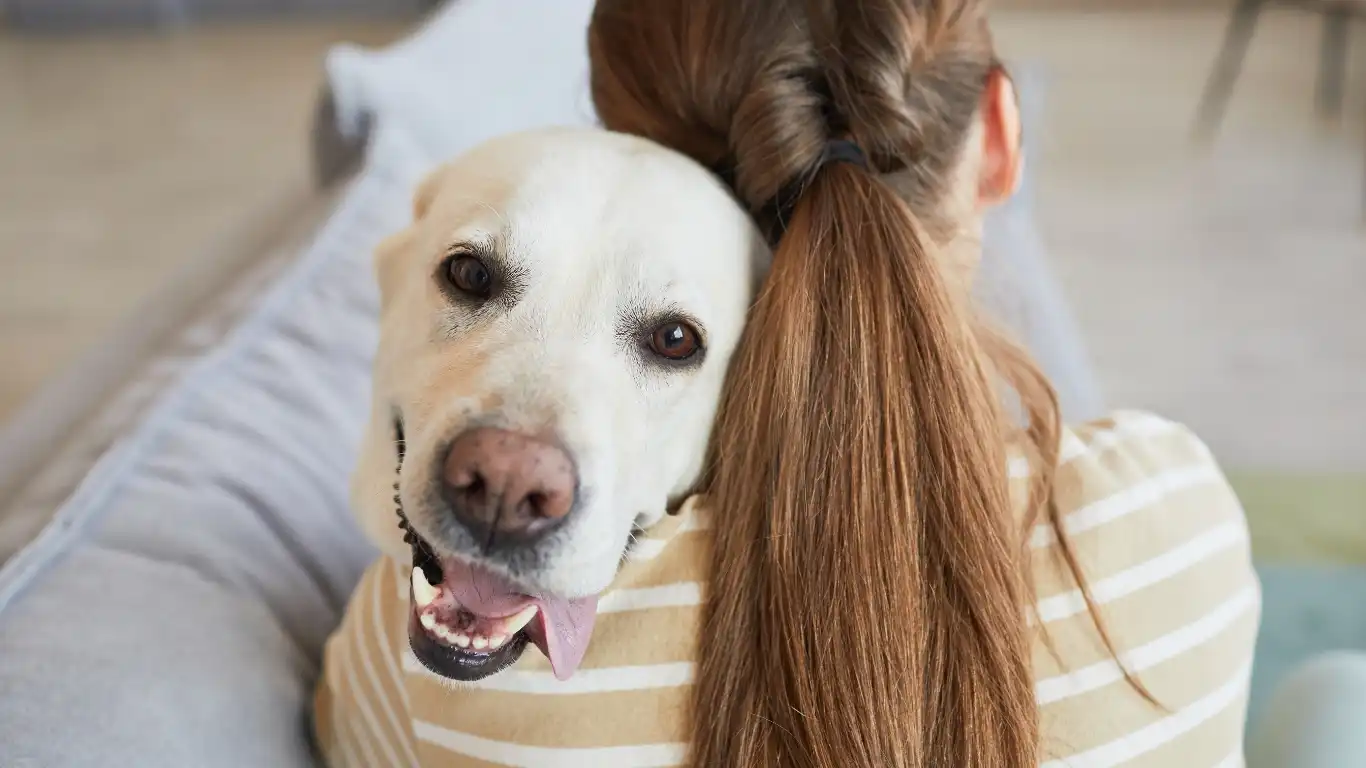How to Avoid Overfeeding with Multiple Treats: A Healthy Guide
If you’re like most pet parents I meet at the clinic, you’re probably guilty of slipping your pup a few extra treats here and there—especially when those puppy eyes work their magic. Trust me, I get it. As a veterinary nurse specializing in nutrition, I’ve had more than a few heart-to-heart convos with clients about how to avoid overfeeding with multiple treats per day. It’s an easy trap to fall into, but those tasty rewards can add up quicker than you’d think, and suddenly your energetic furball starts tipping the scale in the wrong direction.
Why Treats Add Up Faster Than You Realize

More Treats = More Calories
Let’s put this into perspective. A typical 25-pound dog might only need around 500-600 calories a day. But one of those big-name peanut butter biscuits? That can easily clock in at 75 calories a pop. Give two or three a day, and you’re already blowing past their daily treat allowance without even touching their regular food. It’s basically the dog equivalent of eating fast food after a full dinner.
It’s Not Just About Weight
While weight gain is the most obvious side effect, overfeeding treats can lead to other issues, too. I’ve seen dogs come in with upset stomachs, pancreatitis, and even food sensitivities because they’re getting too many rich, high-fat snacks on top of their kibble. And don’t get me started on picky eaters—once they figure out treats are an option, some of them start giving their food bowl the cold shoulder.
Creating a Healthy Treat Strategy

Set a Daily Treat Limit
One simple trick I share with clients is the 10% rule. Treats should make up no more than 10% of your dog’s daily calories. So if your dog needs 600 calories per day, aim for no more than 60 of those to come from treats. Read those treat labels—they’re more revealing than you’d expect.
Track What You Give
I know this might sound extra, but keeping a quick mental note—or even better, jotting it down—helps prevent treat overload. In our house, I use a small mason jar to hold the day’s treat allowance. Once it’s empty, that’s it for the day. It’s a visual reminder that really works, and it’s something I recommend to clients constantly.
Choose Wisely
Not all treats are created equal. Look for options that are low-calorie, high-protein, or even functional—like dental chews or treats fortified with joint support. Better yet, try these:
- Baby carrots (low-cal and crunchy!)
- Freeze-dried liver (potent, so you only need a little)
- Plain air-popped popcorn (hold the butter and salt)
- Green beans (a surprising hit with many pups!)
These snacks can still feel like a treat to your dog without packing on the pounds. Plus, using part of your dog’s regular food as a treat (especially during training) is a great way to control calories without compromising rewards.
Understanding Why We Over-Treat

It’s Emotional—For Us and Them
This part hits home. I’ve worked with countless pet parents who admit that treats are their love language. When their dog looks up with that sweet, expectant face, saying no feels almost cruel. And as someone who’s been in that moment more times than I can count, I totally get it. But remember—dogs crave attention, praise, and play just as much as food. Giving your pup some extra cuddle time or tossing a toy around can be just as rewarding for them—and easier on the waistline.
Training Traps
One of the sneakiest ways overfeeding happens? Training. I see it all the time—dogs in obedience class gobbling up treat after treat with every sit, stay, and paw. While positive reinforcement is key, using high-reward treats in tiny sizes and mixing them with kibble or lower-cal options can still keep your pup motivated without overdoing it. Even better, phase out food rewards over time and swap in verbal praise or a quick game.
Finding Balance Between Love and Limits

It’s Not About Cutting Out Treats—It’s About Smarter Choices
One thing I always emphasize to my clients is this: you don’t have to eliminate treats to keep your dog healthy—you just need to be intentional about them. The key to learning how to avoid overfeeding with multiple treats per day is shifting your mindset from “more is better” to “quality over quantity.”
In my own house, I keep a stash of go-to treats, but I portion them out based on the day’s activities. If my dog’s having a lazy day, I go light. On training-heavy or high-exercise days? I’ll factor that in and allow for a few extras. It’s all about creating that balance without taking the joy away—for either of you.
Make Training Treats Work for You
Here’s a little trick I teach new puppy parents: use your dog’s breakfast kibble as training rewards. Take a portion of their morning meal, set it aside, and use it throughout the day. That way, you’re rewarding good behavior without adding extra calories. I’ve done this countless times with patients who are working on weight management plans, and it works like a charm—dogs don’t care that it’s not a store-bought treat, especially if you act excited while giving it.
How to Spot Overfeeding Early

Keep an Eye on Their Waistline
Weight gain in dogs can creep up quietly. One week they look normal, and by the time their collar’s snug and they’re moving slower, the extra pounds have snuck in. During my nutrition consults, I always remind pet parents to check body condition regularly—every couple weeks is ideal. You want to feel the ribs easily but not see them. That little tuck in at the waist? It should still be visible.
Other Signs Your Dog’s Getting Too Many Treats
- Reduced appetite for their regular food
- Soft or irregular stools (especially with rich treats)
- Low energy or lethargy
- Excessive begging or treat obsession
If you notice any of these signs, it might be time to reassess their treat routine. I’ve worked with many families who didn’t even realize their pup’s sluggish behavior was linked to too many treats—it’s an easy fix once you recognize it.
Including the Whole Family in the Plan

Get Everyone on the Same Page
Oh boy—this is a big one. I’ve seen many well-meaning families where everyone’s sneaking treats behind each other’s backs. One person gives a biscuit, another shares a piece of their sandwich, and someone else is slipping a few pieces of cheese “just this once.” Sound familiar?
To prevent overfeeding with multiple treats per day, communication is everything. Create a shared plan. Whether it’s a jar system, a whiteboard tally, or a simple daily limit everyone sticks to, having structure helps. I once worked with a family who used a fridge magnet chart to track treats—it became a fun way for their kids to stay involved and learn about pet health at the same time.
Be Honest With Your Vet
This might seem obvious, but during checkups, it helps your vet or nutritionist if you’re upfront about how many treats your dog gets daily. No judgment—just facts. I’ve had clients feel embarrassed, but truth is, we’ve all been there. I always say, “It’s not about guilt—it’s about goals.” From there, we can tweak the plan together and make it realistic for your lifestyle.
Alternatives to Food-Based Rewards

Mix It Up—Not Every Reward Needs to Be Edible
If your dog responds well to food, that’s great. But don’t forget: many dogs are just as happy with affection, toys, or even a quick play session. I always encourage pet parents to use a variety of rewards. Here are a few options I’ve used personally and seen success with:
- Tug-of-war or fetch as a training reward
- Verbal praise and petting—especially for affectionate breeds
- Short sniff walks—a big motivator for scent-driven pups
- Chew toys or puzzle feeders instead of snacks
Think of these as “non-food treats.” They still stimulate your dog and reinforce good behavior—without contributing to weight gain. Honestly, the best reward is often just your time and attention.
Try Enrichment Over Snacking
One thing I’ve learned working with behavior specialists is that boredom often leads to excessive treat-giving. Dogs get restless, and we instinctively reach for a snack to calm them. Instead, try rotating toys, hiding kibble in snuffle mats, or giving them a job like carrying a toy around. These kinds of mental and physical challenges do wonders, and they help reduce that constant begging cycle.
Routine, Structure, and Treat Timing

Why Structure Matters More Than You Think
When it comes to learning how to avoid overfeeding with multiple treats per day, having a consistent routine is key. I’ve seen dogs thrive when their day includes predictable mealtimes, clear training windows, and controlled treat distribution. Chaos and inconsistency? That’s usually when things start going off the rails—treats get tossed randomly, and before you know it, you’ve got a pudgy pup and no idea how it happened.
In my own house, we have a pretty simple system. Meals go down at set times, and treats are only given for specific purposes—training, enrichment, or special occasions. This keeps things structured and helps my dog understand that treats aren’t just a free-for-all snack bar. It also teaches self-control and sets healthy expectations around food.
Time Treats With Purpose
If your dog gets most of their treats at the same time every day, that consistency can actually become part of their routine—just like a morning walk or evening cuddle session. I suggest aligning treats with:
- Training sessions—short and focused, with high-value rewards
- Enrichment play—like using puzzle feeders or snuffle mats
- Health routines—like brushing or nail trims, to make it positive
One thing I often recommend (especially to new puppy parents) is having a “treat window”—like a specific 15-minute block when training or enrichment happens. It gives the dog a predictable routine and prevents the all-day snack buffet syndrome.
Veterinary Guidance & Nutritional Support

Work With Your Vet or Vet Nutritionist
I can’t stress this enough: your vet is your partner when it comes to your dog’s diet. If you’re concerned about overfeeding—or even if you’re just unsure about what treats are safe—it’s worth having a quick chat during your next visit. I’ve helped dozens of families tweak treat routines to match their dog’s age, breed, lifestyle, and medical needs.
For dogs with chronic health conditions like diabetes, pancreatitis, or food allergies, the treat conversation gets even more critical. In those cases, I usually work directly with pet parents to design customized treat strategies that work with their dog’s nutritional goals. If you’re ever unsure, lean on your veterinary team—they’re trained to guide you with evidence-based recommendations.
Read Labels Like a Pro
As a vet tech, I’ve spent more time than I’d like to admit squinting at tiny ingredient lists. But trust me, this part matters. Many popular treats are loaded with filler ingredients, artificial flavors, and unnecessary sugars or fats. Look for:
- Single-ingredient treats (like freeze-dried meats)
- Low-fat options, especially for older or less active dogs
- No artificial colors or preservatives
Remember: just because a treat is labeled “natural” doesn’t always mean it’s healthy. Stick to brands that are transparent about their sourcing and nutritional info. And when in doubt, homemade treats—like baked sweet potato coins or boiled chicken chunks—are a great backup.
Setting Your Dog Up for Long-Term Success
Weight Management is a Lifelong Game
One of the most rewarding parts of my job is seeing a dog thrive when their nutrition is dialed in. That tail wags a little harder, their energy returns, and they just seem happier. All that starts with small, daily choices—like being mindful of treats and avoiding overfeeding.
I once worked with a client who cut back their dog’s treat intake by half and replaced half of those treats with play and praise. Within two months, their pup lost four pounds and was acting like a puppy again. It doesn’t have to be drastic—just intentional.
Teach Healthy Habits Early
If you’re raising a puppy, now’s the time to set those treat boundaries. Puppies will take whatever you give them, so build those habits from day one. I always tell new pet parents: train your dog to value attention, structure, and love just as much as food. That mindset shift can help avoid issues down the line—and yes, it totally makes my job easier!
References
- American Veterinary Medical Association (AVMA)
- Pet Obesity Prevention
- World Small Animal Veterinary Association (WSAVA)
- American Animal Hospital Association (AAHA)
Disclaimer
This content is intended for informational purposes only and should not be used as a substitute for professional veterinary advice, diagnosis, or treatment. Always consult with a licensed veterinarian or certified veterinary nutritionist for questions related to your pet’s diet, health, or medical conditions.





